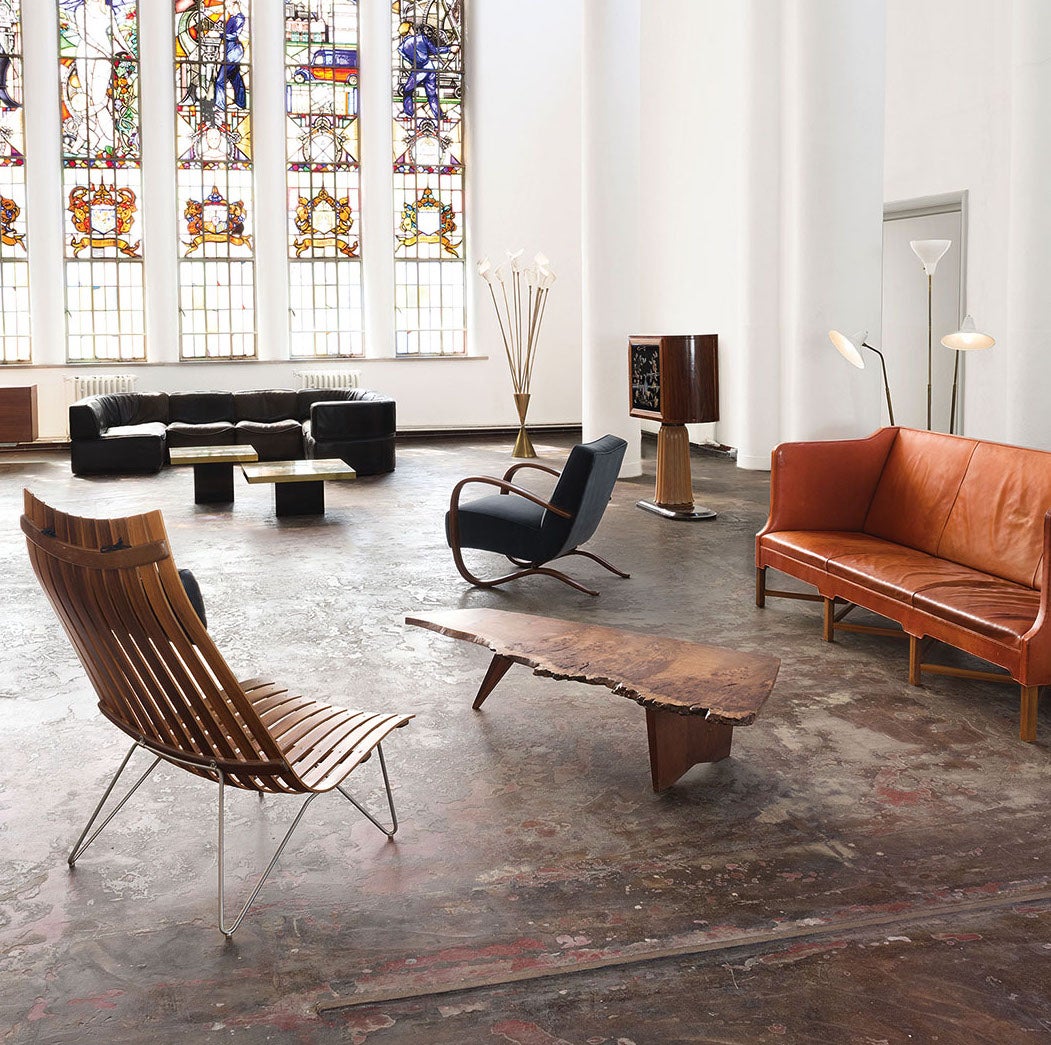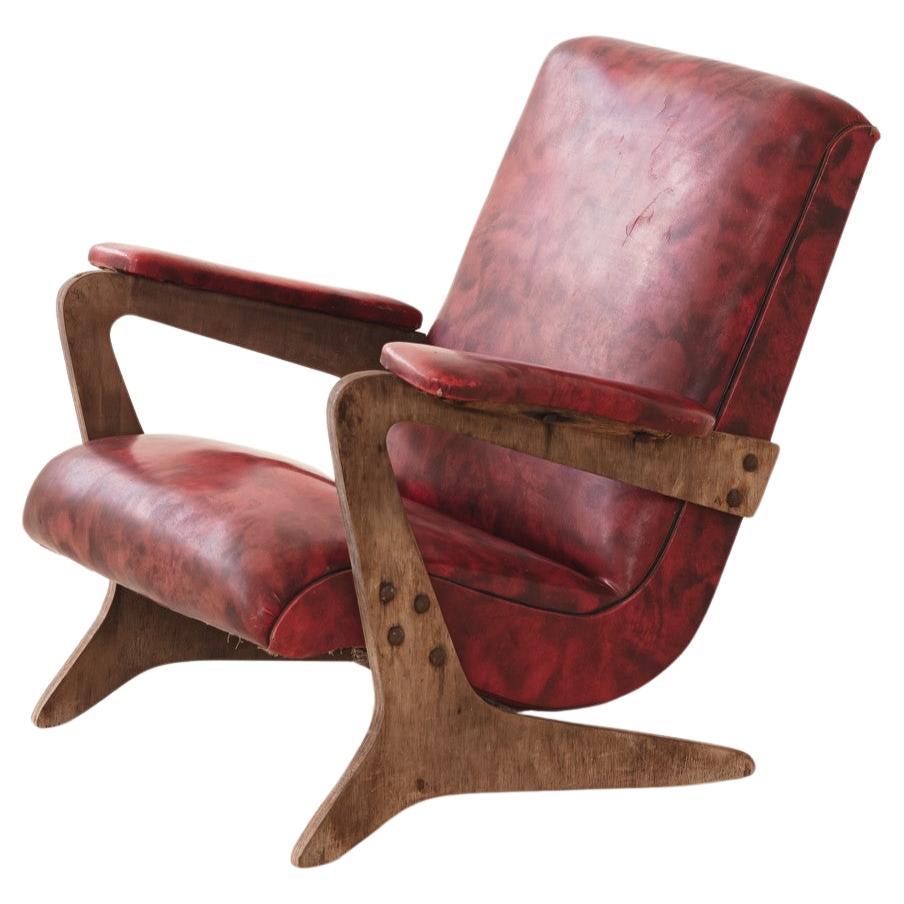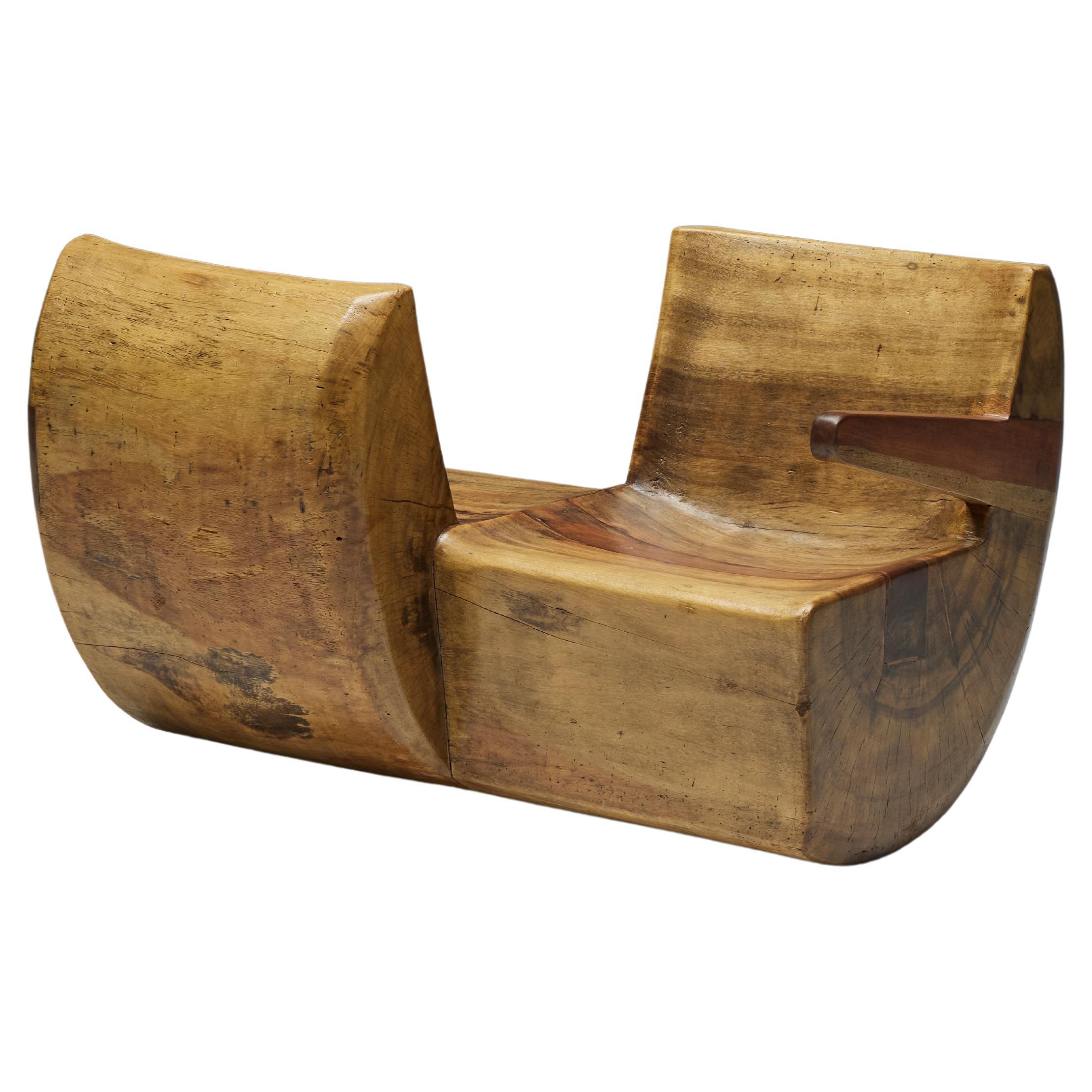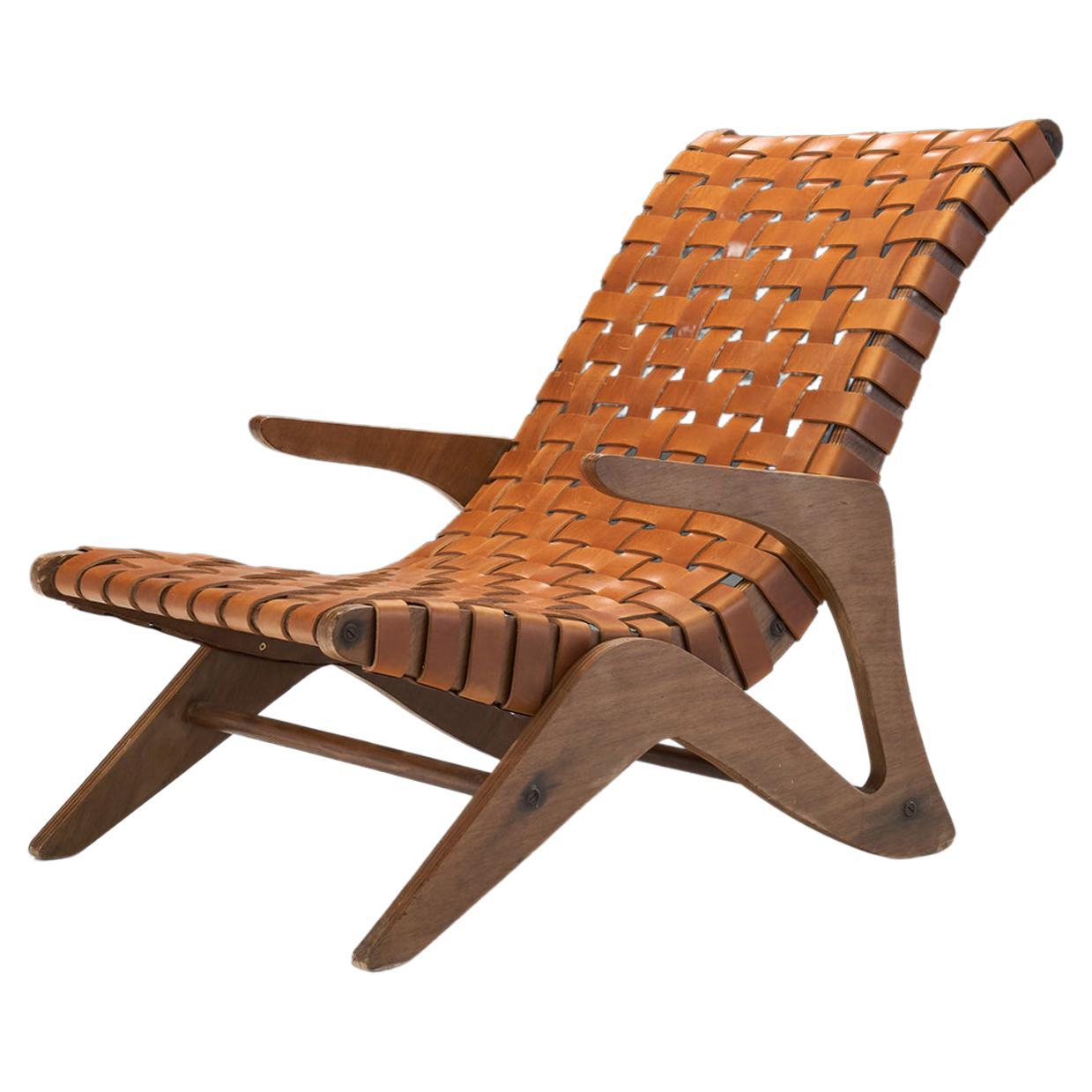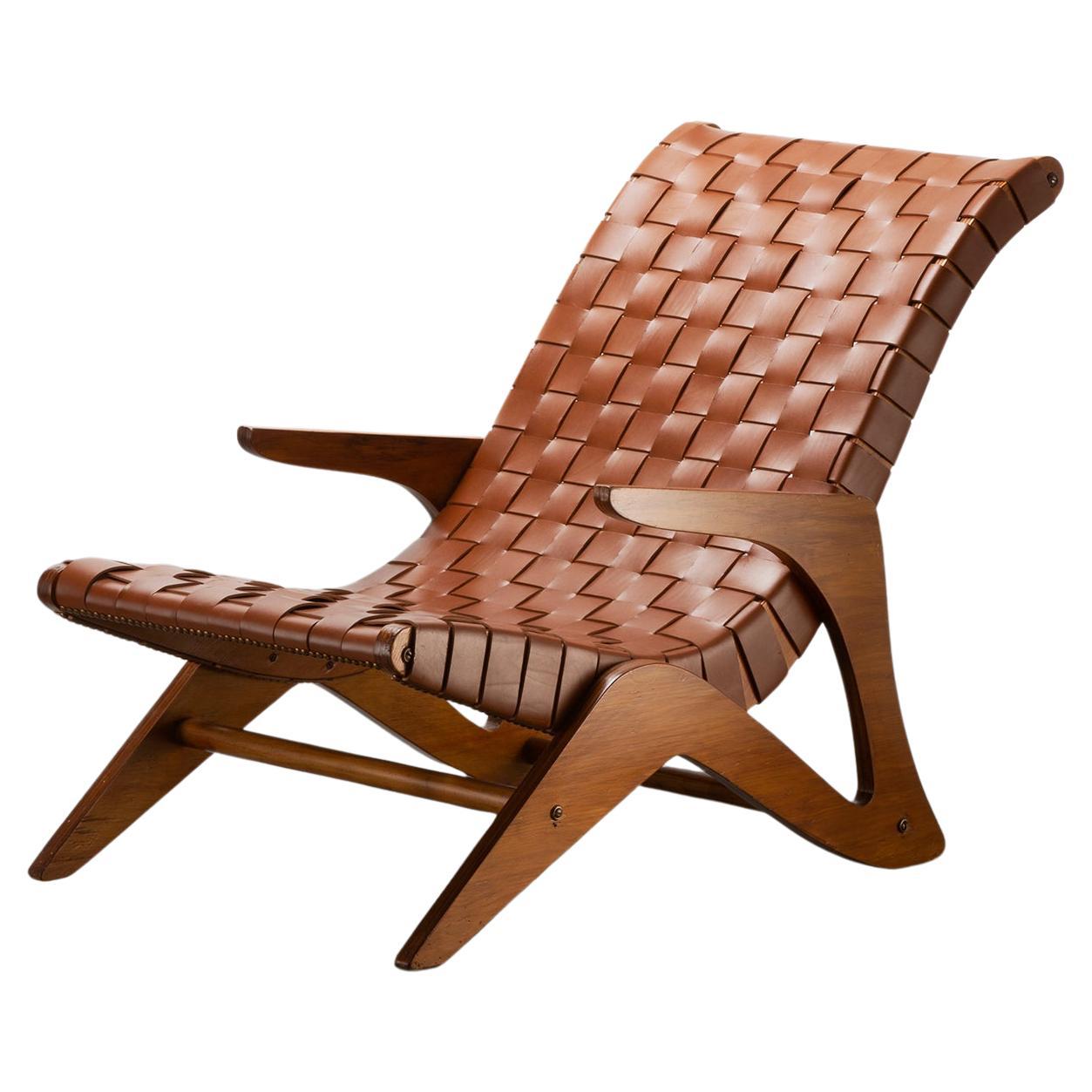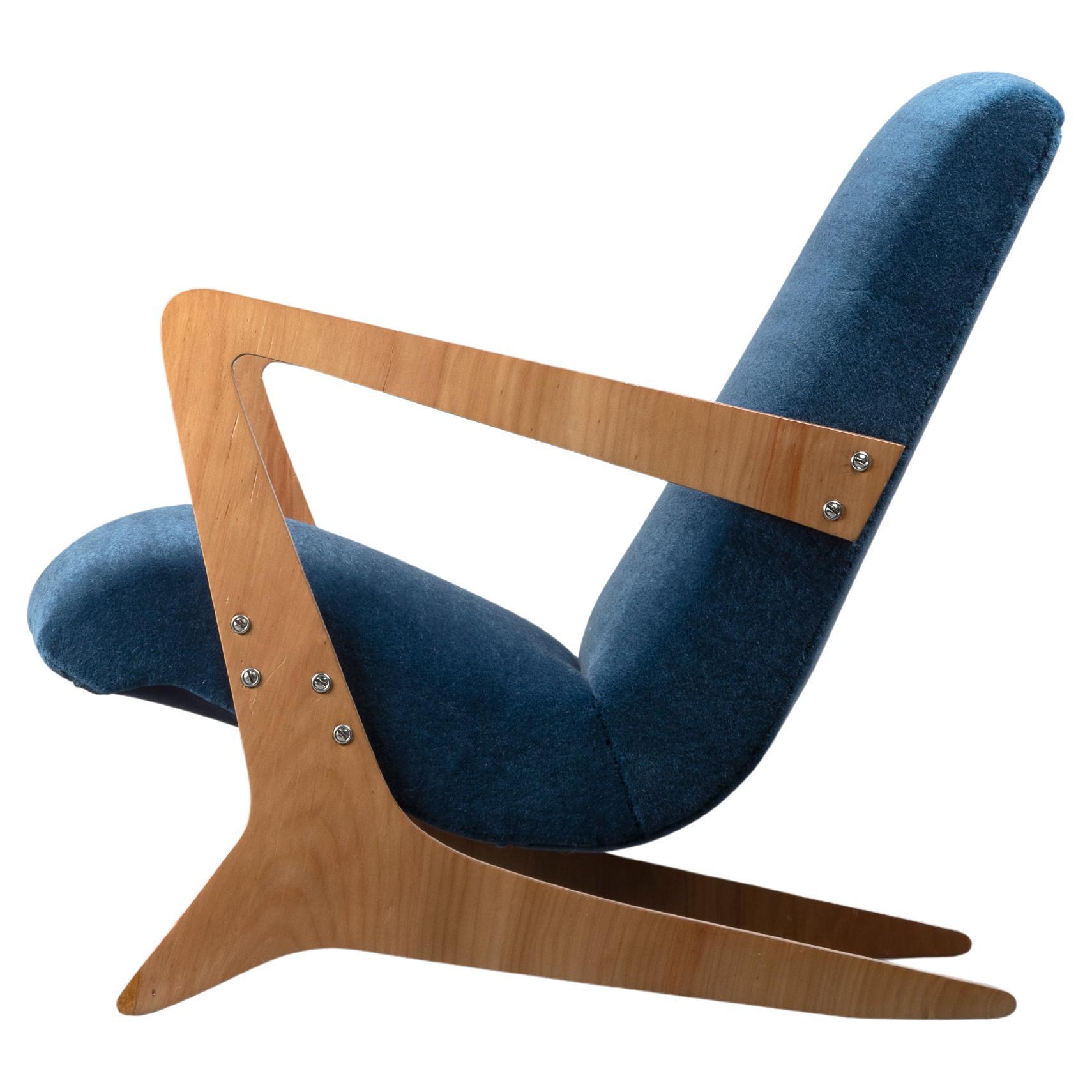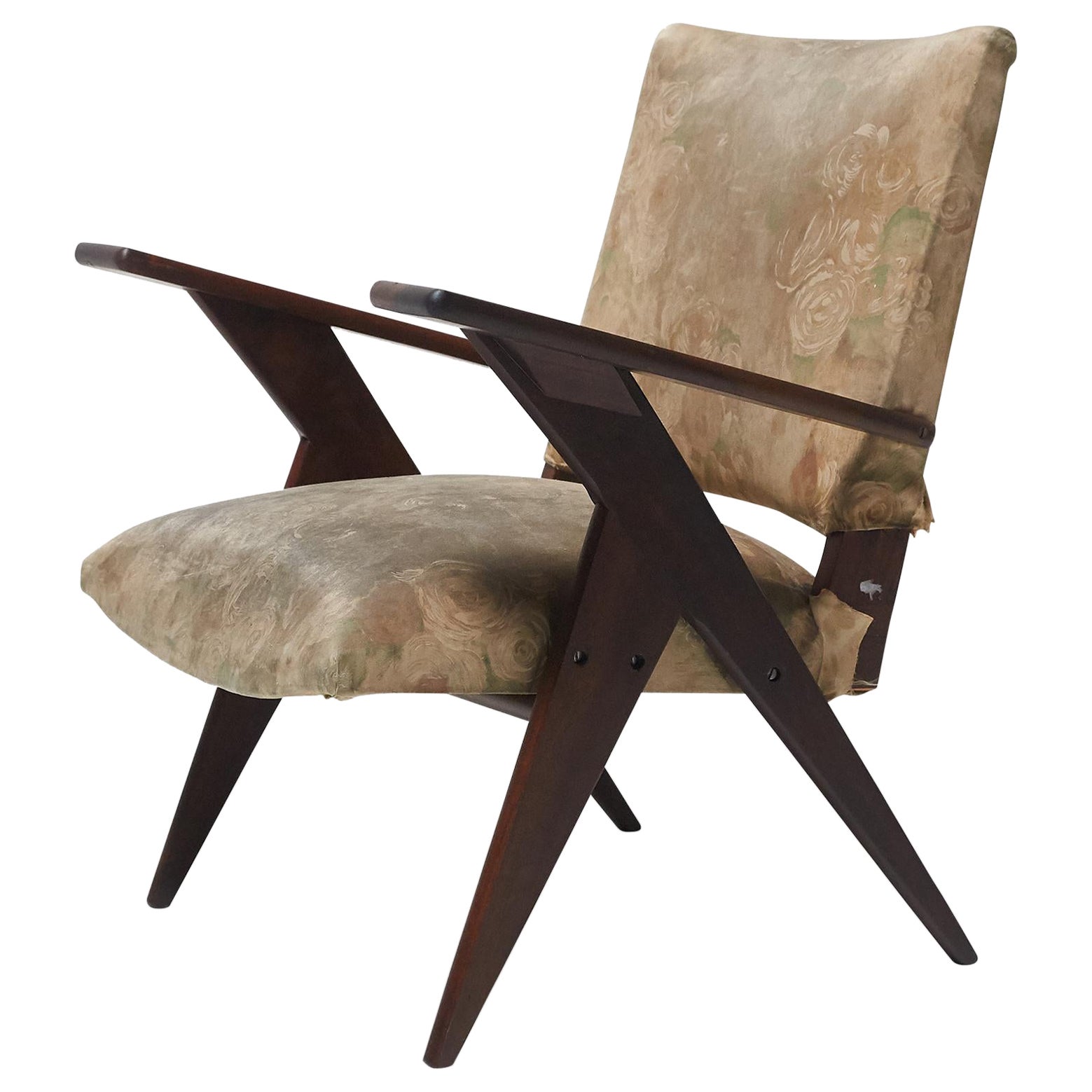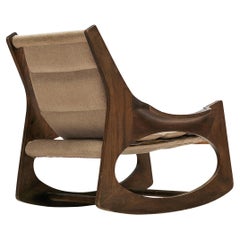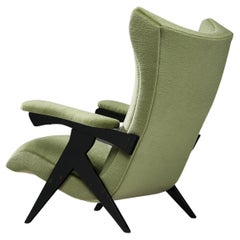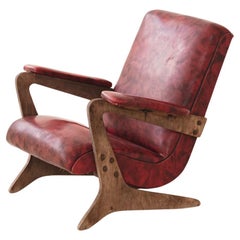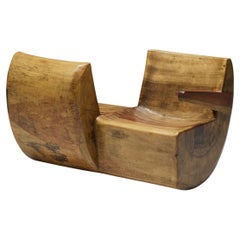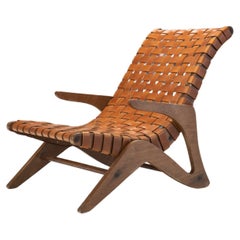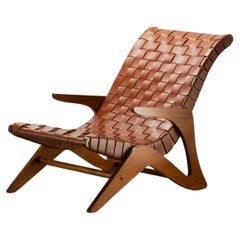José Zanine Caldas, 'Namoradeira' - 'Conversadeira' - Tête-à-Tête - lounge chair, Vinhatico hardwood, Brazil, ca. 1980
José Zanine Caldas’s sculptural rocker, which goes by several names, including Tête-à-Tête, Conversadeira, Namoradeira... is less a chair and more a sculptural proposition in wood; a negotiation of gravity, form, and intimacy. Carved from a single, massive block of Vinhático hardwood, the piece resists the expected grammar of furniture design. There are no legs, no obvious base. Instead, the chair is defined by a continuous arc.
The shape is fundamental. The half-moon curve of the structure gives the piece its kinetic potential. It rocks, but not frivolously. It suggests a careful calibration of balance, a physical metaphor for the dynamic of two people sitting in conversation. This is, after all, a tête-à-tête: a seat for two, oriented toward communion. But unlike traditional tête-à-tête forms from the 19th-century, where seats are arranged in an S-shape, Caldas opts for a more daring geometry. The users’ bodies face the same direction lacking a structural divide, inviting the seating persons to get closer. That it is made from a single piece of wood is not incidental. It reinforces the meaning of uniformity; of two people coming together harmoniously.
The continuity of grain and volume gives the impression of an object grown rather than built. Cracks and splits in the timber are preserved rather than concealed, reminding of the living force of the material. Caldas was known for his belief in the spiritual agency of wood, and in this piece, the shape emerges not just from a design intention but from a dialogue with the material’s innate tendencies. The form hugs the tree's original bulk. You can almost trace the path of the trunk in the curvature of the rocker.
There is a sense of quiet monumentality here. The chair reads as both elemental and modern in the way it merges raw materiality with refined formal restraint. It looks ancient, like something unearthed, but also avant-garde in its brutal reduction of form.
This is not a chair to be tucked under a table. It is a piece that defines its own center of gravity in the room, in the conversation, in the body of the tree it came from.
Biography
José Zanine Caldas (1919–2001), born in Belmonte, Brazil, was celebrated for his raw, natural, and sculptural design qualities. A self-taught designer, Caldas began his career in the construction industry, working as a model builder for renowned architects and designers, including Oscar Niemeyer. In 1948, he founded Móveis Artísticos Z, a company producing semi-mass-produced plywood furniture. However, just two years later, he left the company and returned to his home state of Bahia. There, he embraced local materials and blended colonial aesthetics with the emerging modernist style. His work became distinguished for its fidelity to the essence of materials, breaking away from the rigid rules and objectivism of the Modernist movement. Caldas strongly believed in living harmoniously with nature, a philosophy reflected in his designs and approach to architecture. His innovative style, rooted in respect for natural materials and forms, remains a hallmark of his legacy.
Unlike most of his contemporaries, who graduated from art schools or architectural institutes, José Zanine Caldas was entirely self-taught, developing his own unique style and methods. He eventually left Bahia and moved to Rio de Janeiro, where he established his own studio. There, he created architectural models despite having no formal training as an architect. His innovative approach, skill, and ingenuity earned the admiration of renowned figures such as Lucio Costa and Oscar Niemeyer.
José Zanine Caldas had a deep fascination with diverse cultures and peoples. During his travels through Africa and Asia, he was profoundly influenced by the local customs and traditions he encountered. These experiences led him to recognize a universal truth: people living in harmony with nature tend to sustain themselves in remarkably similar ways, regardless of location. This realization became the foundation of his work, with the human pursuit of unity with nature emerging as its central theme.
In 1968, José Zanine Caldas returned to his native Bahia, drawn by its cultural and natural richness. There, he found inspiration in the local craftsmen who carved boats from fallen trees. Adapting this technique, Caldas began creating sculptural wooden furniture and artworks, chiseling and carving each piece by hand. His method ensured that every creation was one-of-a-kind, showcasing the raw beauty of the material. These handmade works became the centerpiece and pinnacle of his later career.
José Zanine Caldas was deeply committed to his environment, particularly the Brazilian landscape, and this dedication consistently guided his decisions. He was acutely aware of the damage caused by agriculture and deforestation to local ecosystems. As an advocate for rainforest conservation, Caldas established the Foundation Center for the Development of the Application of Brazilian Woods. Through this foundation, he actively worked to combat rainforest destruction, supporting efforts such as funding education and raising awareness about sustainable practices.
For his handmade furniture, José Zanine Caldas made the radical decision to use only found wood, following the practices of local craftsmen. He worked exclusively with wood from trees that had died or fallen naturally. This approach gave rise to his collection known as "Móveis Denúncia", or "protest furniture".
